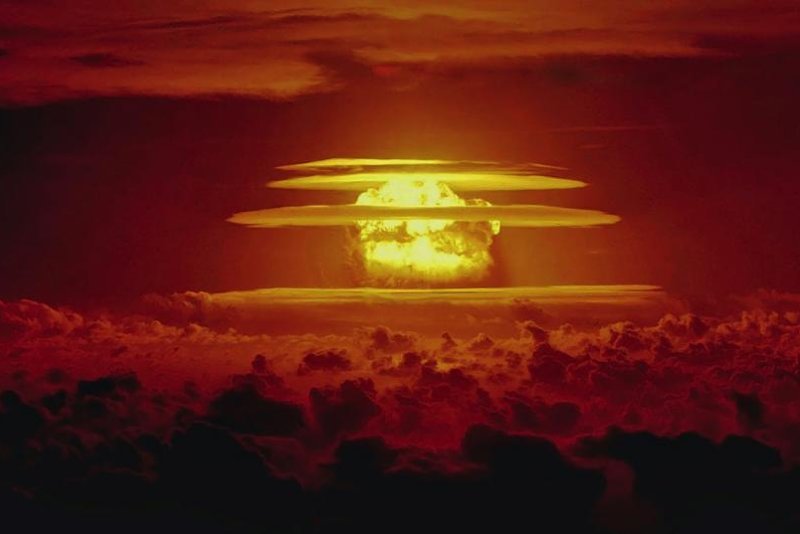The largest hydrogen bomb ever tested by the United States, the Castle Bravo bomb, was detonated in 1954 on an atoll in the Marshall Islands. Photo by National Oceanic and Atmosphere Administration/United States Department of Energy
July 16 (UPI) -- More than a half-century after the United States government ended nuclear tests on the Marshall Islands, radiation levels are still dangerously high. According to a new study, radiation levels at some test sites are 10 times greater than those at Chernobyl.
In the 1940s and '50s, federal officials forcibly removed inhabitants from several of the Marshall Islands, a collection of coral atolls in the Pacific, to make way for nuclear testing. Between 1946 and 1958, the U.S. government conducted 67 nuclear tests on several of the small islands.
Researchers at Columbia University collected and tested soil samples from 11 islands -- part of four atolls, Bikini, Enewetak, Rongelap and Utirik -- that hosted nuclear tests during the Cold War. The results revealed extremely high levels of external gamma radiation. Radiation levels at some of the test sites far exceeded the amount of radiation measured near the Chernobyl and Fukushima nuclear accident sites.
When the government forced inhabitants off the islands, U.S. officials and leaders from the Marshall Islands agreed upon "safe" levels of radiation that would allow for human habitation. They set the level at 100 millirems per year. Samples returned from Bikini revealed radiation levels as high as 648 millirems per year. The largest hydrogen bomb the United States ever tested, the Castle Bravo bomb, was detonated on Bikini in 1954.
The latest research, published Monday in the journal PNAS, suggests most of the islands affected by nuclear tests are not yet safe for human habitation.
The study published this week is the third new one detailing the legacy of the United States government's nuclear testing program in the Marshall Islands. A pair of studies published last week, compiled by the same team of Columbia researchers, showed coconuts and pandanus fruits on some of the affected islands had unsafe levels of cesium-137, a radioactive isotope easily absorbed by plants.
Researchers also confirmed the presence of plutonium-238 on the island of Naen, part of the Rangelap atoll. Plutonium-238 is associated with nuclear waste, not fallout, which suggests the atoll was used as a undisclosed dumping ground.
"We can't say for sure that [dumping on Naen] is what happened," Ivana Nikolic Hughes, an associate professor of chemistry at Columbia, told the Los Angeles Times. "But people should not be living on Rongelap until this is addressed."
Naen was one of a few islands that weren't immediately depopulated. Inhabitants were made to leave only after residents began getting sick from radiation.
"What was surprising was just how high the external gamma radiation was for Naen, which is the outer island for Rongelap Atoll," Nikolic Hughes, director of Columbia's K=1 Project, an effort to educate the public about nuclear technology, told Live Science. "It was populated during the Bravo test ... [the people there] were then moved, moved back and moved again. It's quite a dreadful history of what happened to Rongelapese people."















